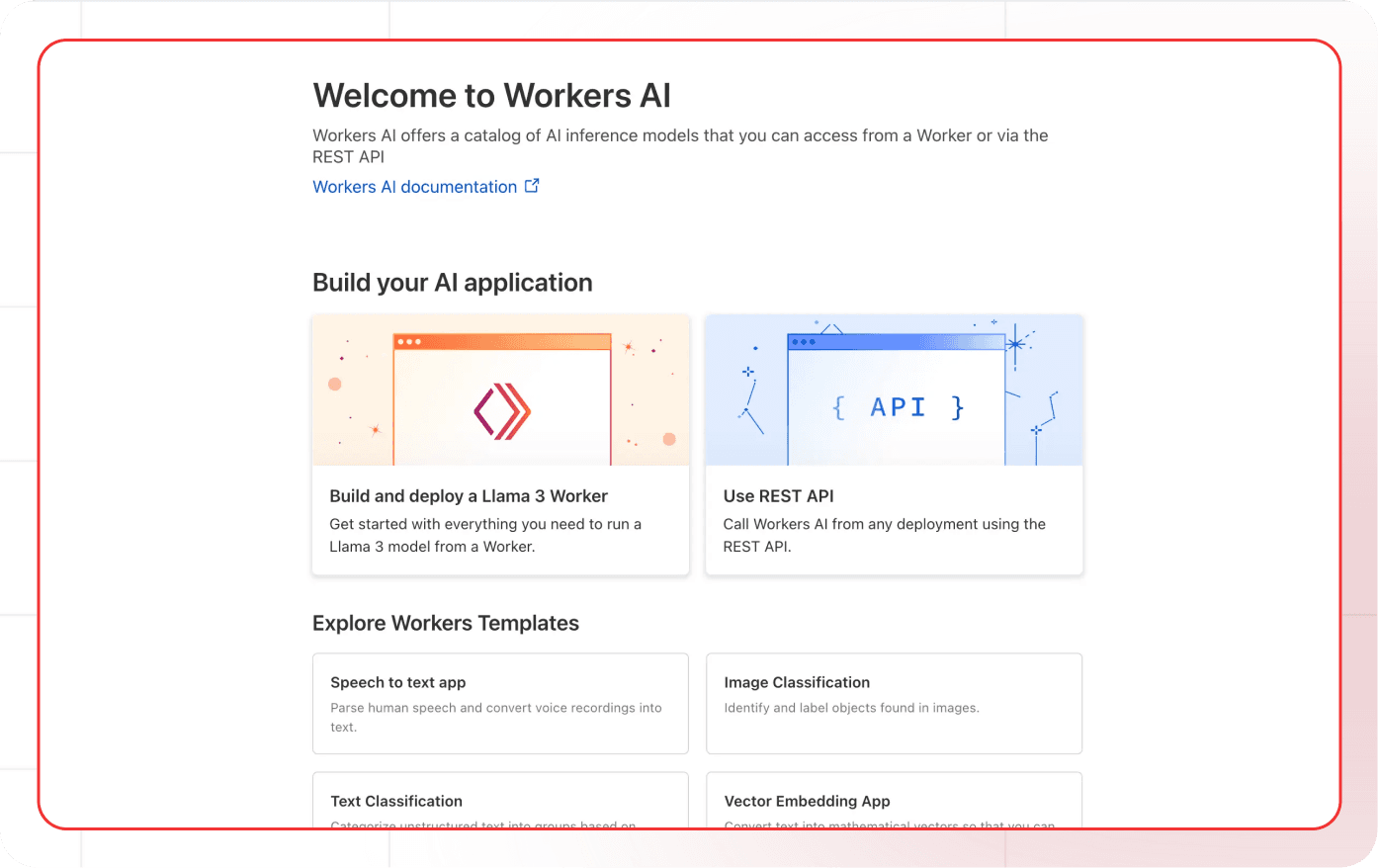Cloudflare
No sections found for this integration
The integration documentation may not have the expected structure
Cloudflare AI is a platform that integrates artificial intelligence capabilities into Cloudflare's global network infrastructure. It leverages Cloudflare's extensive global network to provide fast, reliable, and secure AI services.
Provider Slug:
cloudflareSetup
Step 1: Create Cloudflare Account
- Visit the Cloudflare Dashboard (opens in a new tab)
- Sign up for a new account or log in to your existing account
- Complete the account verification process
Step 2: Get Account ID and API Token
- Navigate to Overview to find your Account ID
- Navigate to Profile to access API keys section
- Generate a new API token with appropriate permissions
- Copy both the Account ID and API token

Step 3: Configure in Lamatic
- Open your Lamatic.ai Studio (opens in a new tab)
- Navigate to Models section
- Select Cloudflare from the provider list
- Paste your Account ID and API token in the designated fields
- Save your changes
Key Features
- Global Network: Leverages Cloudflare's worldwide infrastructure for low-latency AI services
- Edge Computing: AI processing at the edge for faster response times
- Security First: Built on Cloudflare's security infrastructure
- Scalable: Automatic scaling based on demand
- Cost Effective: Pay-per-use pricing model
- Multiple Models: Access to various AI models through a single API
Available Models
Cloudflare AI offers several model categories:
- Text Generation: Models for text completion and generation
- Text Embeddings: Models for creating text embeddings
- Image Generation: Models for creating images from text descriptions
- Translation: Models for text translation between languages
- Classification: Models for text and image classification
Check the Cloudflare AI Models (opens in a new tab) documentation for the latest model offerings and specifications.
Configuration Options
- Account ID: Your Cloudflare account identifier
- API Token: Your Cloudflare API token for authentication
- Model Selection: Choose from available Cloudflare AI models
- Custom Parameters: Configure temperature, max_tokens, and other generation parameters
- Region Selection: Choose the optimal region for your use case
Best Practices
- API Token Security: Keep your API tokens secure and never share them publicly
- Account ID Management: Store your Account ID securely for configuration
- Rate Limiting: Be aware of Cloudflare's rate limits and implement appropriate throttling
- Model Selection: Choose the appropriate model based on your specific use case
- Error Handling: Implement proper error handling for API failures and rate limits
- Cost Optimization: Monitor your usage and optimize requests to reduce costs
Troubleshooting
Invalid API Token:
- Verify your API token is correct and hasn't expired
- Check if your account has sufficient credits
- Ensure the API token has the necessary permissions
Account ID Issues:
- Verify your Account ID is correct
- Check if your account is active and verified
- Ensure you're using the correct Account ID format
Rate Limit Exceeded:
- Implement exponential backoff in your requests
- Consider upgrading your Cloudflare plan for higher limits
- Monitor your usage in the Cloudflare dashboard
Model Not Available:
- Check if the model is available in your region
- Verify your account has access to the specific model
- Contact Cloudflare support for model availability issues
Authentication Errors:
- Ensure your API token is properly formatted
- Check if your account is active and verified
- Verify you're using the correct API endpoint
Important Notes
- Keep your API tokens and Account ID secure and never share them
- Regularly rotate your API tokens for enhanced security
- Monitor your usage and costs in the Cloudflare dashboard
- Test your integration after adding each token
- Some models may require additional setup or approval
- Be aware of Cloudflare's terms of service and usage policies
Additional Resources
- Cloudflare AI Documentation (opens in a new tab)
- Model Documentation (opens in a new tab)
- Cloudflare Community (opens in a new tab)
Need help? Contact Lamatic support (opens in a new tab)